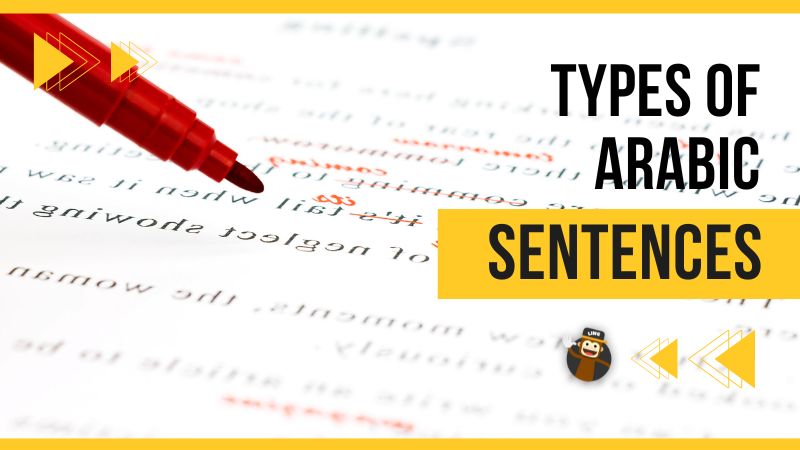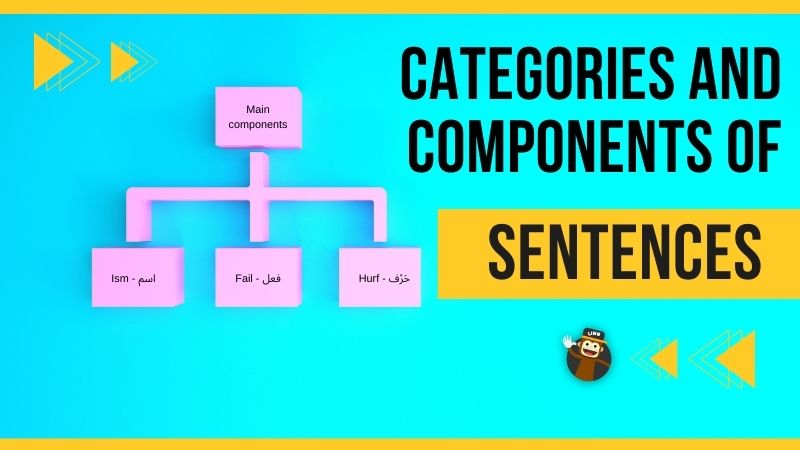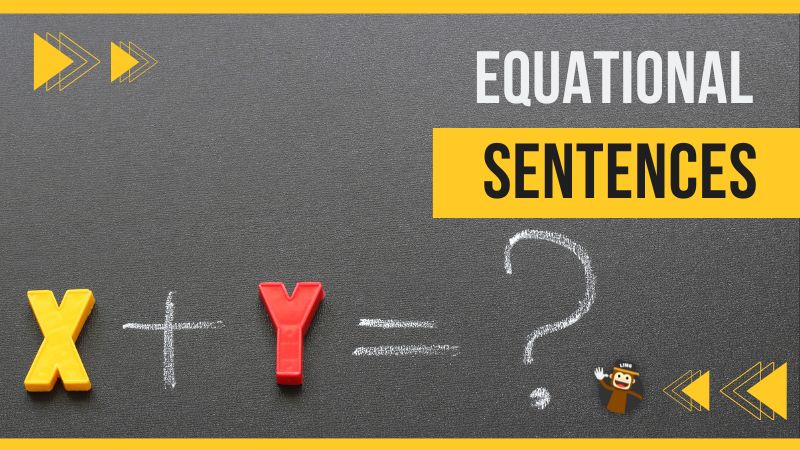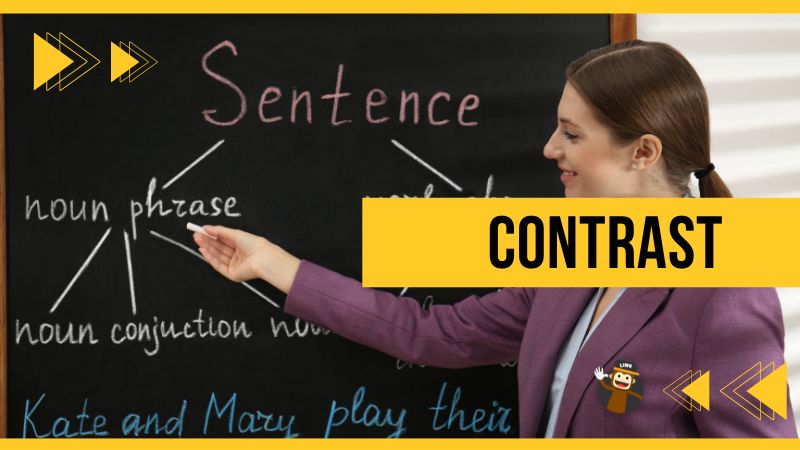Every language has different grammar rules and sentence structures. For example, the SVO order (Subject, Verb, Object) is the basic structure of English and many other languages. Similarly, the Arabic language has rules that are unique and may be too different from other languages. Ready to learn more about how to create your first dramatically correct sentence? Well, you are in luck because this article will teach you about the basic Arabic sentence structure and its types.
Simple Arabic Sentence Structure
What is the simplest and easiest sentence one can make in the Arabic language?
If we talk about the simplest sentence in Arabic, it can be made with a noun and a matching adjective, and it can be verbless, unlike in English. You might not understand it well, so I would like to show you two examples.
- The boy is tall. – الولد طويل – alwalad tawil.
- The girl is cute .- الفتاة لطيفة – alfataat latifa.
In these examples, you notice that the noun, which in these cases is boy and girl, is simply joined with an adjective to make a complete sentence.
Types Of Arabic Sentences

There are many types of Arabic sentences. Some important ones are nominal sentences, verbal sentences, verbless sentences, and other types, including equational sentences, complex sentences, and conditional sentences. Let’s take you to a world of all these types by explaining them individually.
Nominal Sentence
A nominal sentence starts with a noun or pronoun. Nominal sentences have only two parts:
- Subject – مبتدا – mubtada
- Predicate – خبر – Khabar
The subject in the nominal sentence is always a noun or a pronoun. These sentences’ predicates are mostly combined nouns, adjectives, verbs, prepositions, and nouns.
Same as in English, right? But here is the catch!
The nominal sentence can confuse many English speakers because they are used to having a verb in most of their sentences. Consider the following examples to understand the nominal sentences.
- This is a good car. – هذه سيارة جيدة – hadhih sayaarat jayida.
- The boys are in Saudi Arabia. – الأولاد في المملكة العربية السعودية – al’awlad fi almamlakat alearabiat alsueudia.
In the first sentence, the first word, haza – هذه, is the subject, and the remaining is the predicate, which includes an adjective and a noun.
In the second sentence, the word الأولاد – al’awlad is the subject to be joined with a Proper Noun to complete the sentence.
You might get mixed up initially, but once you start acing this, you’ll feel blessed. Imagine going on without having to learn and use so many tenses and forms of verbs; you got me!
Verbal Sentence
Unlike the English language, it’s not a must to have a sentence start with a noun/pronoun, for example, in the case of a verbal sentence. A verbal sentence is a sentence that always starts with a conjugable verb. This verb can be in the imperative form, present, or past tense.
The only particles that can precede these verbs are the words like
- Maybe – قَدّ – qadd
- Already – مَا – ma
- Not – لا – laa
- Why not – لِـ – li
There are some other words too which can help you in this case.
The verbal sentence has at least two main parts; the first part is the Verb – الفِعْل – al’fail, and the second one is the Subject – الفَاعِل – al’faail.
Examples
- Go out! – اُخْرُجُو! – ukhrujuu
- Let’s go to the park – دعنا نذهب إلى الحديقة – daena nadhhab ‘iilaa alhadiqa
In these examples, we can see that the sentences start with the Arabic verbs or the words mentioned above, which makes these sentences verbal sentences.
One Word Sentence
In English and other languages, the verb is never considered a sentence, but sometimes, in Arabic, it can play the role of a sentence. This generation is obsessed with keeping the conversation short anyway, so it’s like a dream come true for you guys. See? Arabic is difficult but easy too.
Example: Write! – اُكْتُبْ – uktub .
In this example, the subject is implied within this verb and is called the implicit subject, which is called مُسْتَتِر – mustatir in the Arabic language.
The parts of a verbal sentence other than the main verb are called a compliment – مُكَمِّلات – mukammalat. This word is derived from the word مکمل – mukammal, which means that these compliments complete the remaining sentence.
This compliment can be an object – مَفْعُول – maf’ool, a prepositional phrase – شِبْه جُمْلَة – shib jumla, an adverb – ظَرْف, or a noun phrase – إسم العبارة – ism al’ibara.
Categories And Components Of A Sentence

According to the Arabic grammar of Modern Standard Arabic, the structure of a normal Arabic sentence consists of many parts of speech of the following three categories.
Ism – اسم
Ism – اسم is translated as Noun but consists of all kinds of nouns, pronouns, adverbs, adjectives, etc.
Fail – فعل
Fail – فعل is a category that includes all kinds of verbs only.
Hurf – حَرْف
Hurf – حَرْف has articles, many particles, and conjunctions.
Classification Of Nouns
A Noun is a person, animal, place, or thing. The concept of nouns is the same in English and Arabic. But in Arabic, nouns explain much more than that. They are classified into four categories.
- Plurality تعدد: singular, plural, or dual.
- Gender جنس: masculine مذكر and feminine المؤنث.
- Definiteness الوضوح: definite and indefinite.
- Derivation الاشتقاق: derived from a source, or derived from gerund جيروند, or not derived
Variety In Verbs
Verbs are action words both in English and Arabic. But, Arabic verbs have many conjugations. The correct verb form should be applied according to the situation and gender. Arabic verbs are categorized as
- Imperative form – أمر حاضر معروف – Amar hazar maaroof.
- Imperfect form – مضارع – madare
- Perfect form – ماضي
Arabic Pronouns
Modern Standard Arabic has three categories of pronouns.
- Singular, which is used for a single noun.
- Dual, which is used for two nouns.
- And Plural, which is used for three or more nouns.
Unlike English, Arabic has two words for the second and third person. In English, the word “you” is a gender-neutral term. The case is different in Arabic. Let’s now find out more about this phenomenon.
Singular
In Arabic, the letter and pronoun “I” is called أنا – ana, “he” is translated as هو – howwa, whereas “she” is said هي – heya. In Arabic, the word “you” for masculine is called as انتَ – anta, and the same word for feminine is انتِ – anti.
Dual
There are three dual pronouns in Arabic. The word “we” is spoken as نحن – nahnu. The word “they” is translated as هما – huma and the Arabic word for “you” (dual) is أنتما – antuma.
Plural
The word “we,” when used as a plural, remains the same نحن – nahnu. For masculine plural, “you” is called أنتم – antum, and for feminine plural, it is spoken as أنتن – antunna. Similarly, “they” when used for masculine plural changes into هم – homma, and for feminine plural, it is translated as هن – hunna.
Equational Sentences

Even if you have just started learning Arabic grammar, you might have noticed that Arabic sentences can make sense without the verb. In English, a verb makes a very important part of a sentence, but that’s not the case in Arabic.
In Arabic grammar, such sentences are sometimes called nominal sentences/noun sentences. Sometimes they are called equational sentences because they are equivalent to English sentences containing the verb “to be.”
These sentences would have the verb “to be” formed in the current state, assuming they were in English.
Here is an example for you.
My name is Hamza – إسمي حمزہ– ismi hamza
In this example, the word ‘إسمي’ means “my name,” and the word حمزہ means Hamza. We can see that there is no verb in this sentence, so simply imagine there is an equal (+) sign in that place where the verb would go in English, but in the Arabic language, there’s a blank space.
Formula For Equational Sentences
There is a simple formula to make an equational sentence, which is
Subject = Predicate
The subject of an equational sentence doesn’t always have to be an Arabic Pronoun. The Predicate can be a kind of a noun or an adjective, too, for example.
Ali is a student – علی طالب – Ali taalib
Ali + student
Ali is a proper noun in this sentence, and the subject and student are predicates.
Noun Phrase In Arabic
A Noun phrase is a group of words with a noun as its head. This head can be joined with complements as well as modifiers. The Arabic noun phrase is usually accompanied by one or more modifiers. These modifiers include adjectives, adverbs, nouns, and pronouns.
Simple Arabic Noun Phrases
Simple noun phrases are categorized into two types.
- Definite – If it has a definite article
- Indefinite – If it doesn’t have a good definite article.
Examples
- The book – الکتاب – al kitaabu (Definite).
- A book – کتاب – kitaabun (Indefinite).
Complex Noun Phrases
Complex noun phrases are the ones that consist of either a verbal or an adjectival construct. For example; long patience –طویل الصبر –
We can clearly see that this phrase has an adjectival construct; hence it is a complex noun phrase.
Sound Plural
Proper plural comes in two major forms based on gender. Let’s learn about those.
Masculine
It is formed by the addition of oon – ون if it is the subject one is talking about and yun – ين if it is an object within a sentence.
Example: مؤِمن+ون =مؤمنون
Feminine
The addition of اتٍ – aat/ atin is mad if it is the subject and only ت – at if it is an object noun in the sentence.
Example
مؤِمن+ات = مؤمنات
Contrast Between English And Arabic Noun Phrases

Similarities
In both languages, nouns are the head of noun phrases and are always subject or object. Noun phrases consist of nouns, modifiers, or complements. In both languages, nouns are either countable or uncountable, proper or common, and contain definite or indefinite articles.
Differences
Arabic and English have some differences, too, as Arabic is more explicit than English. Here are the top three ones for you to know about.
- English is singular and plural, while Arabic has singular, plural, and dual.
- Unlike English, the plurals in Arabic are categorized into Sound Plural and Broken Plural.
- Only nouns and pronouns can be used as plurals in English but in Arabic, adjectives, and verbs are also in plural form.
Example Sentences
Here is a list of some example sentences for you to learn more about. We provide the romanization of each Arabic sentence for your ease. If you can’t read Arabic yet then you might want to check out our blog post about the Arabic alphabet.
| English | Arabic (عربى) | Romanization |
| Every day he gets out of bed earlier. | كل يوم يخرج من السرير مبكرا. | kula yawm yakhruj min alsarir mubakira. |
| For a week, Sarah has also been making an effort to study Arabic. | لمدة أسبوع ، تبذل سارة أيضًا جهدًا لدراسة اللغة العربية. | limudat ‘usbue , tabdhul saratan aydan jhdan lidirasat allughat alearabiati. |
| Since last year, she has served as something of an administrator for this website. | منذ العام الماضي ، عملت كمسؤول عن هذا الموقع. | mundh aleam almadi , eamilt kamaswuwl ean hadha almawqaei. |
| Has he just left for further schools in Europe? | هل غادر للتو إلى مدارس أخرى في أوروبا؟ | hal ghadir liltawi ‘iilaa madaris ‘ukhraa fi ‘uwruba? |
| He’s making his way towards the front door. | إنه يشق طريقه نحو الباب الأمامي. | iinah yashuqu tariqah nahw albab al’amami. |
| I haven’t had lunch yet. | لم أتناول الغداء بعد. | lam ‘atanawal alghada’ biedu. |
| In the backyard, she has a row of cabbage plants. | في الفناء الخلفي ، لديها صف من نباتات الكرنب. | fi alfana’ alkhalfii , ladayha safun min nabatat alkurunbu. |
| I’m pretty fluent in French. | أنا أجيد اللغة الفرنسية بطلاقة. | ana ‘ujid allughat alfaransiat bitalaqatin. |
| James is there for the customer engagement presentation, right? | جيمس موجود لعرض مشاركة العملاء ، أليس كذلك؟ | jims mawjud lieard musharakat aleumala’ , ‘alays kadhalika? |
| Joe has spent the last eight minutes talking about the furniture decorating. | أمضى جو الدقائق الثمانية الأخيرة يتحدث عن تزيين الأثاث. | amdaa jaw aldaqayiq althamaniat al’akhirat yatahadath ean tazyin al’athathi. |
| Johnny is making a lot of effort to finish the diploma. | يبذل جوني الكثير من الجهد لإنهاء الشهادة. | yabdhul juni alkathir min aljuhd li’iinha’ alshahadati. |
| Quarter past seven is when she prepares supper, and quarter past ten is when she puts the kids to bed. | الساعة السابعة والربع هي عندما تستعد للعشاء ، والربع وعشرة وأربعاء هي عندما تضع الأطفال في الفراش. | alsaaeat alsaabieat walrubue hi eindama tastaeidu lileasha’ , walrubue waeashrat wa’arbiea’ hi eindama tadae al’atfal fi alfarashi. |
| She and I haven’t spoken in six days. | هي وأنا لم نتحدث منذ ستة أيام. | hi wa’ana lam natahadath mundh sitat ‘ayaamin. |
| She is a cook at this restaurant. | هي طاهية في هذا المطعم. | hi tahiat fi hadha almateami. |
| The group has heard the professor clarify how to utilize the term. | استمعت المجموعة إلى الأستاذ يوضح كيفية استخدام المصطلح. | astamaeat almajmueat ‘iilaa al’ustadh yuadih kayfiat astikhdam almustalahi. |
| The information you are attempting to convey to him is clear to him. | المعلومات التي تحاول نقلها إليه واضحة له. | almaelumat alati tuhawil naqlaha ‘iilayh wadihatan lah. |
| The lesson is being given by the instructor. | يتم إعطاء الدرس من قبل المدرب. | yatimu ‘iieta’ aldars min qibal almudaribi. |
| The moon and the globe are spherical. | القمر والكرة الأرضية كروية. | alqamar walkurat al’ardiat kurawiatun. |
| They have an easy existence. | لديهم وجود سهل. | ladayhim wujud sahla. |
| Tom has finished the book’s first two chapters. | أنهى توم الفصلين الأولين من الكتاب. | anhaa tum alfaslayn al’awalayn min alkitabi. |
Wrapping Up

That’s it for this blog post. As always, we have tried to break difficult concepts into easier ones for you. Ling App has your back if you wish to learn more about this rich language!
Also, check out useful Arabic greetings and Arabic food to learn more. Don’t like reading much? Download the Ling App from Google Playstore or App Store and start learning the Arabic language now!



































































